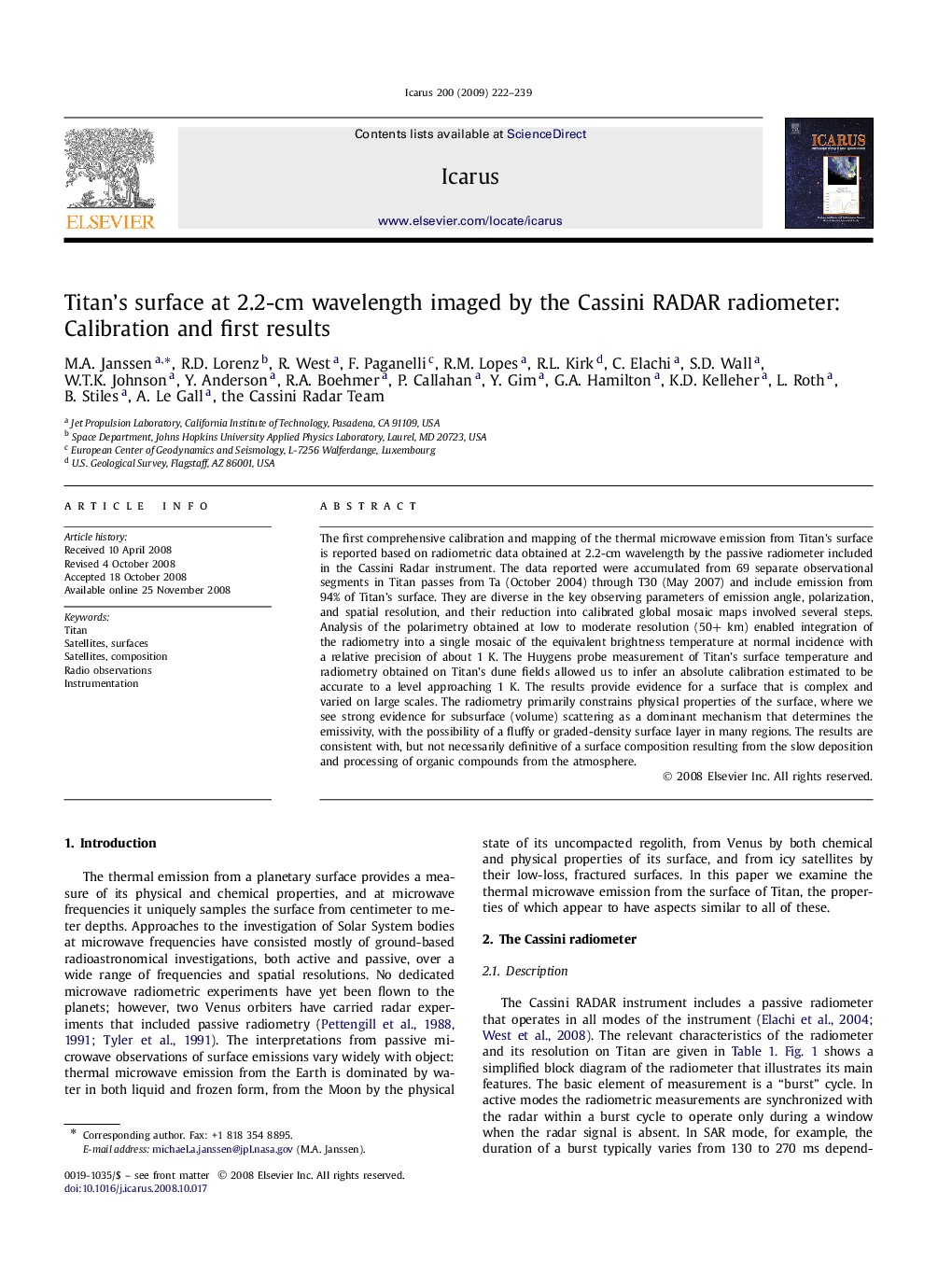| Article ID | Journal | Published Year | Pages | File Type |
|---|---|---|---|---|
| 1774818 | Icarus | 2009 | 18 Pages |
The first comprehensive calibration and mapping of the thermal microwave emission from Titan's surface is reported based on radiometric data obtained at 2.2-cm wavelength by the passive radiometer included in the Cassini Radar instrument. The data reported were accumulated from 69 separate observational segments in Titan passes from Ta (October 2004) through T30 (May 2007) and include emission from 94% of Titan's surface. They are diverse in the key observing parameters of emission angle, polarization, and spatial resolution, and their reduction into calibrated global mosaic maps involved several steps. Analysis of the polarimetry obtained at low to moderate resolution (50+ km) enabled integration of the radiometry into a single mosaic of the equivalent brightness temperature at normal incidence with a relative precision of about 1 K. The Huygens probe measurement of Titan's surface temperature and radiometry obtained on Titan's dune fields allowed us to infer an absolute calibration estimated to be accurate to a level approaching 1 K. The results provide evidence for a surface that is complex and varied on large scales. The radiometry primarily constrains physical properties of the surface, where we see strong evidence for subsurface (volume) scattering as a dominant mechanism that determines the emissivity, with the possibility of a fluffy or graded-density surface layer in many regions. The results are consistent with, but not necessarily definitive of a surface composition resulting from the slow deposition and processing of organic compounds from the atmosphere.
